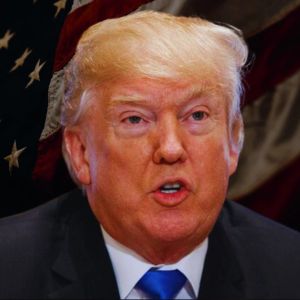European Union stuck in limbo as tariff talks drag
3 min read
Donald Trump added six more countries to his growing trade war list on Wednesday, releasing new tariff warning letters to the leaders of the Philippines, Brunei, Moldova, Algeria, Iraq, and Libya. The announcements were once again made by Trump through screenshots posted on Truth Social, confirming that the total number of countries hit with fresh tariff demands has now reached 20. Trump had teased the decision the night before, claiming that he would release names of “a minimum of 7 countries” by morning and more later in the day. He only named six and did not explain whether the seventh letter was dropped or delayed. These letters arrived just 48 hours after Trump sent near-identical messages to 14 other countries, including Japan, South Korea, Malaysia, Kazakhstan, South Africa, Laos, Myanmar, Bosnia and Herzegovina, Tunisia, Indonesia, Bangladesh, Serbia, Cambodia, and Thailand. Trump confirms August 1 start, denies any deadline extension All 20 letters are each two pages long, signed by Trump, and declare that new US import tariffs will begin August 1. The letters inform each leader that their country’s exports will face tariffs between 20% and 40%, depending on “our relationship with your Country.” Trump added that adjustments to those rates are “perhaps” possible, but only later, if relations improve. The move is directly tied to Trump’s earlier trade push on April 2, when he rolled out what he called “liberation day” tariffs. That policy created a baseline 10% duty on nearly all countries and introduced higher rates for dozens of nations he accused of exploiting US trade. The global market reaction was instant: panic. Trump froze those hikes within a week, promising a 90-day pause, which was originally set to end this week. But on Monday, Trump signed an executive order delaying the tariff start date to August 1. Despite the extension, Trump insisted on Tuesday that “there will be no change” going forward. “No extensions will be granted,” he posted online. European Union stuck in limbo as talks drag While 20 countries have already been served, the European Union is still waiting. Trump’s earlier reciprocal tariff deadline for the EU expired on July 9, but no agreement has been finalized. Brussels had aimed to reach a framework by that date to dodge the same tariffs already hitting other nations. That didn’t happen. On Tuesday, Trump told reporters, “We’re probably two days off from sending them a letter. We are talking to them,” hinting that a final decision was close. During a Cabinet meeting on Wednesday, he said, “They treated us very badly until recently, now they’re treating us very nicely. It’s like a different world.” Trump added, “They were among the toughest to deal with.” Trade between the US and EU was worth 1.68 trillion euros (around $1.97 trillion) in 2024, including both goods and services. The EU had a 50 billion euro surplus, due to gains in goods trade, even though it ran a deficit in services. Trump has repeatedly criticized that imbalance. Howard Lutnick, US Commerce Secretary, said during an interview on CNBC’s Power Lunch that “The European Union, to their credit, has now made significant, real offers.” He said the deals include opening EU markets to American farmers, ranchers, and fishermen, and claimed that “the president’s got those deals on his desk and he’s thinking about how he wants to play them.” Trump is expected to settle on a 10% base tariff for the EU, with room for exemptions in specific industries. That’s far less than the 50% rate he previously floated. Ursula von der Leyen, President of the European Commission, kept her tone cautious. “We stick to our principles, we defend our interests, we continue to work in good faith, and we get ready for all scenarios,” she said during a speech to the European Parliament on Wednesday. Peter Chase, senior fellow at the German Marshall Fund, broke it down on CNBC’s Squawk Box Europe. He said, “You know, it’s the importer who pays the tariff, not the exporter. If the Europeans have a tariff of 10% and Korea has a tariff of 25% then… an American business is paying more for the same product from Korea than it would be paying for one from Europe.” He added, “European businesses would therefore deal with it, but it’s the American customer that’s the one that will be paying for it.” Cryptopolitan Academy: Coming Soon – A New Way to Earn Passive Income with DeFi in 2025. Learn More

Source: Cryptopolitan



